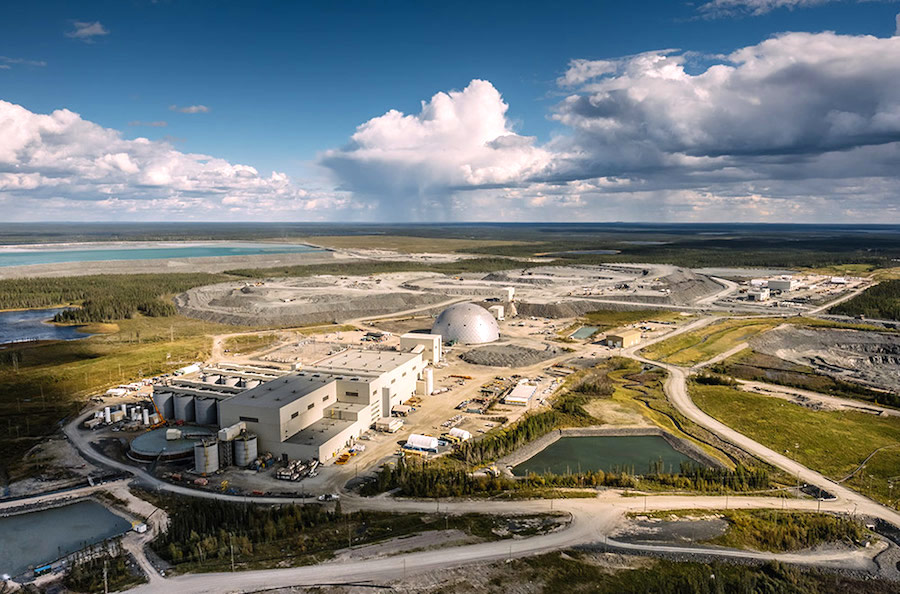
Sign up for daily news updates from CleanTechnica on email. Or follow us on Google News!
Is the world really at a crossroads of energy consumption choices? We know that fossil fuels — the old and worn trio of coal, oil, and natural gas — have powered our world for a very long time, but they have also comprised nearly 75% of global greenhouse gas emissions. That means fossil capitalism has singlehandedly produced the majority of climate change. It’s clear that these emissions have caused temperatures to rise, glaciers to melt, and extreme weather to become a norm. Instead of holding at 1.5°C above pre-industrial levels, as outlined in the Paris Agreement, leaders across the globe are debating whether an “all-of-the-above” energy policy can best help consumers. Lower emissions are imperative, but leaders around the world seem hesitant to commit to a sustainable future.
Really?
The shift to renewables is essential to maintain a livable environment for our lives and the lives of generations to come. It’s also well underway, regardless of what Big Media wants you to hear. The expansion of solar, wind, and battery technology is taking on a significant role in the transition away from the fossil fuels that are igniting planetary heating.
Prior To Trump Inauguration, Investments That Can Lower Emissions Flourished
On January 10th, the US Department of the Treasury announced the details of 140 projects spanning aluminum production, building material decarbonization, industrial heat, and critical mineral supply chains across more than 30 states. The projects received a total of $6 billion in allocations through the Qualifying Advanced Energy Project Credit (48C). The companies behind these projects committed to investing billions more to qualify.
These are projects that are targeted to meet critical innovative production needs of essential components for the economy, both general manufacturing and clean energy manufacturing. The 48C program, a $10 billion federal investment under President Biden’s Investing in America agenda and the Inflation Reduction Act, supported clean energy manufacturing by accelerating critical material production and reducing industrial greenhouse gas emissions. This capped tax credit spurred $44 billion in total investment across 250 projects.
If you think that the Trumpsters are going to halt these investments and progress in renewable energy, think again. Even with all the “drill, baby, drill” boasting, Trump can’t stop the global energy supply from its upward clean energy trajectory. In fact, the US Energy Administration’s Short-Term Energy Outlook (STEO) concludes that US renewable capacity additions, especially solar, will continue to drive the growth of US power generation over the next two years.
Solar power is the fastest growing energy sector worldwide, with growth driven by ever-decreasing costs and the modules’ quick installation capacity. Utilities and independent power producers will add 26 gigawatts (GW) of solar capacity to the US electric power sector in 2025, and 22 GW in 2026. Last year, a record 37 GW of solar power capacity was added to the electric power sector, almost double the 2023 solar capacity additions.
Wind capacity additions will increase by around 8 GW in 2025 and 9 GW in 2026, slight increases from the 7 GW added in 2024. Trump says wind turbines are horrible, but onshore wind is cheaper than new natural gas plants, according to estimates from the Energy Information Administration.
Yes, natural gas-fired capacity growth slowed in 2024, with only 1 GW of capacity added to the power mix, yet natural gas remains the largest source of US power generation.
According to the IEA, the world is on course to add more renewable capacity in the next five years than had been installed since the first commercial renewable energy power plant was built more than 100 years ago.
Of course, with the Trumpsters bowing to Big Oil, the news about China driving a battery boom and building large factories to produce them hasn’t been well-publicized by Big Media. Falling prices of batteries has helped make electric cars sold in China cheaper than those with a combustion engine. In the second half of 2024, EV sales in China, the world’s largest car market, outnumbered those with combustion engines. Plus, over the next decade, the country is likely to deploy 4 TW of wind and solar capacity, generating perhaps 8,300 TWh annually.
It’s not just China, either, that’s on the road to renewables. The United Arab Emirates is also expanding its battery storage systems by building a battery storage facility with a capacity of 19 GW hours alongside a large 5.2 GW solar park. In Europe, the share of renewables in the electricity mix reached 47% in 2024 and fossil fuels fell to an historic low of 29%. Those are two of many examples of countries moving ahead with clean energy goals, even as Trump cries foul.
A Focus On Canada’s Efforts To Lower Emissions
Canada’s Commission on Carbon Competitiveness is looking to accentuate electricity and transport sectors. That’s because these sectors already have evident pathways to net zero and are being embraced globally — 20% of all cars sold last year were electric, and the annual growth of solar and wind generation is over 7%. The Commission sees Canada’s climate policy as about more than decarbonization; they say it must also be about “positioning Canada to thrive in a world that is transitioning to a net-zero economy.” As a result, climate policy must be crafted as part of a broader economic strategy that “seeks to advance Canada’s carbon competitiveness.”
The challenge comprises multiple interconnected objectives:
- decarbonize Canadian industry
- avoid carbon leakage — Canadian industry shouldn’t lose market share due to higher carbon costs than their international competitors
- attract low-carbon investment across the economy; and, foster the growth of green sectors with high growth potential
The Commission’s first report finds risks of carbon leakage in nine sectors in Canada: iron and steel, aluminum, fertilizers, basic chemicals, cement, conventional oil and gas extraction, oil sands, pulp and paper and petroleum refining. But that risk varies across sectors with four sectors standing out as high-risk: iron and steel, chemicals, fertilizers, and pulp and paper (with cement close behind).
The Commission’s second report focuses on high-risk sectors and asks what to do about that risk — how to remove leakage as a barrier to action? With sight on the year 2030, recommendations are to use benchmark standards to protect against leakage, but also calibrating them heavily to the actual risk of leakage in each sector. In the high-risk sectors, the standard may need to be particularly generous.
Many companies active in heavy industry face investment decisions in the near term that will shape their emissions trajectories for decades to come. The Commission admonishes that, if investments in low-carbon production technologies do not happen soon and at scale, Canada’s heavy industrial sectors risk becoming noncompetitive in global markets that will punish GHG-intensive production.
Final Thoughts
Trump began reversing the country’s energy policies his first day in office with a spate of orders largely favoring oil, gas, and coal. But there is one renewable energy that did find favor: geothermal. Energy experts say that makes sense — geothermal energy makes electricity 24/7 with steam from the Earth’s natural heat that then is controlled to spin a turbine. It’s a climate solution because it reduces the need for traditional power plants that burn fossil fuels and cause climate change. The Energy Department estimates the next generation of geothermal projects could provide some 90 gigawatts in the US by 2050 — enough to power 65 million homes or more.
Is it a start for the Trumpies? Barely. But it is something.
Chip in a few dollars a month to help support independent cleantech coverage that helps to accelerate the cleantech revolution!
Have a tip for CleanTechnica? Want to advertise? Want to suggest a guest for our CleanTech Talk podcast? Contact us here.
Sign up for our daily newsletter for 15 new cleantech stories a day. Or sign up for our weekly one if daily is too frequent.
CleanTechnica uses affiliate links. See our policy here.
CleanTechnica’s Comment Policy




